In recent years, the concept of agrivoltaics has emerged as a sustainable and innovative approach to address two pressing global challenges: food shortages and climate change. Agrivoltaics, also known as solar farming or agrophotovoltaics, involves the coexistence of solar photovoltaic (PV) systems and agricultural practices on the same land. This comprehensive guide explores the growing importance of agrivoltaics and how it offers a promising solution to enhance food production, mitigate climate change impacts, and promote sustainable agriculture.
Understanding Agrivoltaics
What is Agrivoltaics?
Agrivoltaics, also known as solar farming or agrophotovoltaics, is an innovative approach that combines the coexistence of solar photovoltaic (PV) systems and agricultural practices on the same land. It involves the installation of solar panels or PV modules above agricultural fields, allowing for dual land use and the simultaneous generation of renewable energy and food or crop production. By harnessing the power of the sun for both electricity generation and agricultural productivity, agrivoltaics offers a sustainable solution to optimize land use and address multiple global challenges.
Benefits of Agrivoltaics
Agrivoltaics offers a range of benefits, making it an increasingly important approach in addressing food shortages and climate change:
Increased Land Productivity:
Agrivoltaics optimizes land use by simultaneously generating renewable energy and growing crops. This dual land use allows farmers to generate additional income from electricity generation while maintaining or even enhancing agricultural productivity.
Enhanced Crop Yields:
The shading effect provided by solar panels can help create a more favorable microclimate for crops. It reduces the intensity of sunlight, which can lower evaporation rates, minimize water stress, and mitigate extreme temperature fluctuations. These conditions can lead to increased crop yields and better crop quality.
Water Conservation:
The shading provided by solar panels helps reduce evaporation from the soil, resulting in water conservation. Agrivoltaic systems can help farmers optimize water use and improve irrigation efficiency, reducing water requirements and supporting sustainable water management practices.
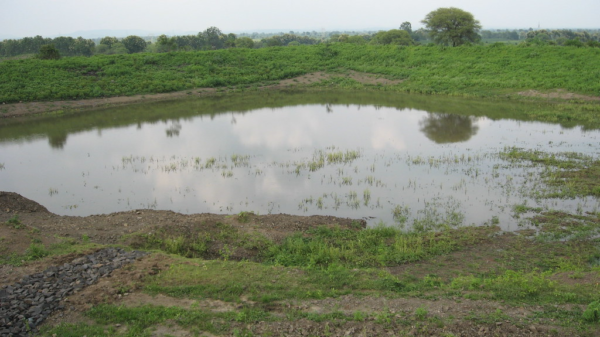
Renewable Energy Generation:
Agrivoltaics allows for the production of clean, renewable energy through solar panels. By generating electricity from sunlight, agrivoltaic systems contribute to reducing greenhouse gas emissions and dependence on fossil fuels.
Climate Change Adaptation:
The combined benefits of renewable energy generation and enhanced agricultural productivity make agrivoltaics an effective strategy for climate change adaptation. It helps farmers adapt to changing climatic conditions, such as heatwaves or droughts, by providing shade and reducing water demand for crops.
Components of an Agrivoltaic System
An agrivoltaic system typically consists of the following components:
Solar PV Modules:
High-quality solar photovoltaic modules or panels are installed on support structures above the agricultural field. These panels capture sunlight and convert it into electricity.
Support Structures:
Racks, poles, or mounting structures are used to elevate the solar panels above the ground, allowing sufficient space for crops to grow underneath.
Agricultural Crops:
Various types of crops, including vegetables, fruits, or field crops, are grown beneath the solar panels. The choice of crops depends on factors such as regional suitability, market demand, and agricultural practices.
Irrigation Systems:
Efficient irrigation systems, such as drip irrigation or precision sprinklers, are utilized to provide water to the crops as needed. Water management is crucial for optimizing crop growth and minimizing water wastage.
Monitoring and Control Systems:
Sensors, meters, or monitoring devices are installed to measure and analyze various parameters, including solar energy production, soil moisture levels, temperature, and humidity. These systems help farmers and operators manage and optimize the agrivoltaic system’s performance.
Understanding the concept of agrivoltaics, recognizing its benefits, and understanding the key components of an agrivoltaic system are crucial for harnessing its full potential in addressing food shortages and climate change. By combining renewable energy generation with sustainable agricultural practices, agrivoltaics offers a promising approach to create a more sustainable and resilient future.
Addressing Food Shortages with Agrivoltaics
Enhancing Crop Productivity
Agrivoltaics has the potential to enhance crop productivity, contributing to addressing food shortages. The combination of solar panels and agricultural practices offers several benefits:
Shading Effect:
The solar panels installed above the crops provide shade, reducing the intensity of direct sunlight. This shading effect can help protect plants from excessive heat and reduce water evaporation rates. It creates a more favorable microclimate, reducing water stress on the crops and minimizing the risk of crop failure during hot and dry periods.
Temperature Regulation:
The shade provided by the solar panels helps regulate the temperature in the agricultural area. It can prevent extreme temperature fluctuations, which can be detrimental to crop growth. By maintaining more stable temperatures, agrivoltaics can create optimal conditions for crops, leading to improved growth rates, higher yields, and better quality produce.
Reduction of Water Requirements:
The shading effect of the solar panels also helps reduce water requirements for irrigation. With lower evaporation rates and minimized water loss, farmers can optimize their water use and potentially reduce their reliance on scarce water resources. This water conservation aspect is particularly crucial in regions where water availability is limited or during drought conditions.
Water Conservation and Irrigation Efficiency
Agrivoltaics promotes water conservation and improves irrigation efficiency, contributing to sustainable agriculture:
Reduced Evaporation:
The solar panels create a protective layer that reduces direct exposure to sunlight, thereby decreasing water evaporation from the soil surface. This reduction in evaporation rates helps conserve water, ensuring that a larger portion of the irrigation water reaches the crop roots and is effectively utilized for plant growth.
Improved Irrigation Management:
Agrivoltaics often involves the use of advanced irrigation techniques, such as drip irrigation or precision sprinklers. These irrigation systems deliver water directly to the root zone of the crops, minimizing water wastage through surface runoff or evaporation. By optimizing irrigation practices, agrivoltaics can improve water use efficiency and contribute to sustainable water management in agriculture.
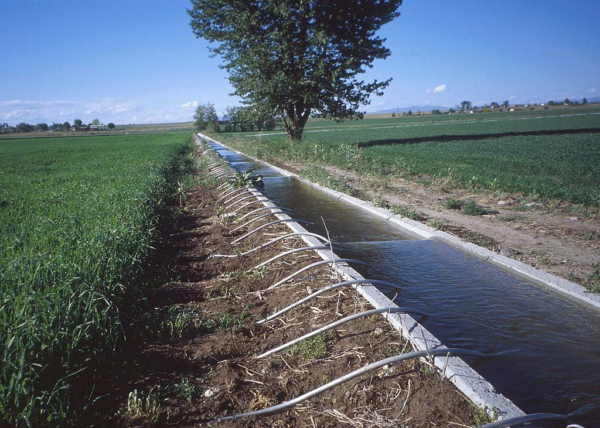
Extending Growing Seasons
Agrivoltaics can extend growing seasons by providing crops with protection against extreme weather conditions:
Temperature Moderation:
The shade provided by the solar panels helps moderate temperature extremes, protecting crops from both excessive heat and cold snaps. By creating a more stable microclimate, agrivoltaics can extend the period during which crops can grow and thrive. This extension of the growing season allows for the cultivation of more crops and a higher overall yield.
Frost Protection:
In regions prone to frost, the installation of solar panels can provide a protective barrier for crops. During cold spells, the panels act as a shield, reducing heat loss from the ground and preventing frost formation on the crops. This protection helps preserve the crops and minimizes the risk of frost damage, enabling farmers to extend their cultivation periods and increase overall productivity.
Diversifying Crop Choices
Agrivoltaics offers opportunities for diversifying crop choices and promoting agricultural biodiversity:
Versatility of Crop Selection:
The installation of solar panels above agricultural fields allows for greater flexibility in crop selection. Different types of crops, including vegetables, fruits, or field crops, can be cultivated underneath the panels, depending on local conditions, market demand, and agricultural suitability. This diversification of crop choices can help farmers adapt to changing market trends and enhance food security by reducing dependence on a single crop.
Promotion of Biodiversity:
Agrivoltaic systems can contribute to the preservation of biodiversity by creating a habitat for beneficial insects, birds, and other wildlife. The coexistence of solar panels and crops provides a more diverse ecological environment, promoting natural pest control and reducing the need for chemical pesticides. This approach supports sustainable agricultural practices that prioritize biodiversity conservation.
By enhancing crop productivity, conserving water, extending growing seasons, and diversifying crop choices, agrivoltaics offers a promising solution to address food shortages. The combined benefits of renewable energy generation and sustainable agriculture make agrivoltaics a compelling approach to achieve both food security and environmental sustainability.
Mitigating Climate Change with Agrivoltaics
Renewable Energy Generation
Agrivoltaics plays a significant role in mitigating climate change by contributing to renewable energy generation:
Solar Energy Harvesting:
By integrating solar panels into agricultural landscapes, agrivoltaics harnesses the abundant solar energy and converts it into electricity. This renewable energy source reduces the reliance on fossil fuels, which are major contributors to greenhouse gas emissions. The generation of clean, renewable energy through agrivoltaics helps reduce the carbon footprint associated with conventional energy sources.
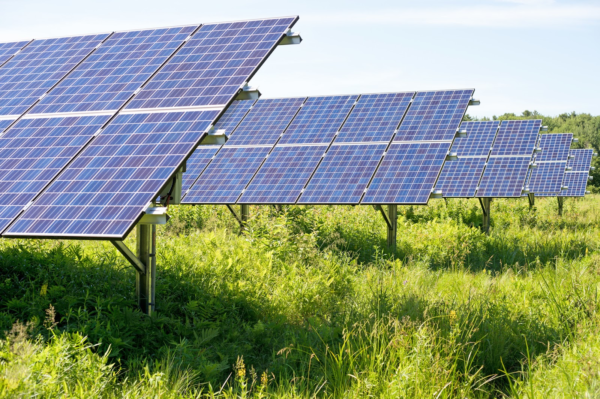
Offsetting Fossil Fuel-Based Electricity:
Agrivoltaic systems can supply electricity to nearby communities or be connected to the power grid. The energy generated by these systems replaces a portion of the electricity that would otherwise be generated from fossil fuel-based power plants. This displacement of conventional energy sources with solar-generated electricity reduces greenhouse gas emissions and contributes to a more sustainable energy mix.
Reduction of Greenhouse Gas Emissions
Agrivoltaics contributes to the reduction of greenhouse gas emissions, a key factor in mitigating climate change:
Carbon Neutrality:
Solar energy generation through agrivoltaics is carbon-neutral since it does not emit greenhouse gases during operation. By displacing fossil fuel-based electricity generation, agrivoltaics helps avoid the release of significant amounts of carbon dioxide and other greenhouse gases into the atmosphere.
Reduced Agricultural Emissions:
Agrivoltaics promotes sustainable agricultural practices, which can lead to reduced emissions from conventional farming activities. By providing shade and reducing water stress, agrivoltaics can minimize the need for irrigation and the associated energy-intensive pumping systems. Additionally, the promotion of organic and regenerative farming practices under agrivoltaic systems can further reduce the use of chemical fertilizers and pesticides, which contribute to greenhouse gas emissions.
Land Use Efficiency and Preservation
Agrivoltaics offers land use efficiency and contributes to the preservation of natural ecosystems:
Dual Land Use:
The integration of solar panels with agricultural practices allows for the efficient utilization of land. Agrivoltaic systems make productive use of land that would otherwise be dedicated solely to agriculture or solar energy installations. This dual land use approach optimizes the use of limited land resources, reducing the need for additional land conversion for either agriculture or solar energy projects.
Preservation of Natural Habitats:
By maximizing land use efficiency, agrivoltaics helps preserve natural habitats and reduces the pressure to convert ecologically valuable land for agriculture or solar energy projects. The coexistence of solar panels and crops creates a harmonious balance between energy generation and biodiversity conservation, promoting the preservation of important ecosystems and supporting the overall health of the environment.
Climate Adaptation and Resilience
Agrivoltaics enhances climate adaptation and resilience in agricultural systems:
Reduced Vulnerability to Extreme Weather:
The shade provided by the solar panels helps mitigate the impact of extreme weather events, such as heatwaves or hailstorms, on crops. Agrivoltaic systems can protect crops from excessive heat, which is increasingly common due to climate change. This protection allows for more stable and reliable crop yields, reducing the vulnerability of agricultural systems to climate-related risks.
Water Conservation:
Water conservation practices employed in agrivoltaics, such as reduced evaporation rates and optimized irrigation, contribute to climate adaptation. As water availability becomes increasingly uncertain due to changing precipitation patterns, agrivoltaics helps farmers adapt by efficiently managing water resources and minimizing water-related risks.
By generating renewable energy, reducing greenhouse gas emissions, optimizing land use, and enhancing climate adaptation and resilience, agrivoltaics offers a powerful tool in mitigating climate change. The combination of renewable energy generation and sustainable agricultural practices helps pave the way for a more sustainable and climate-resilient future.
Implementing an Agrivoltaic System
Site Selection and Design Considerations
Implementing an agrivoltaic system requires careful site selection and design considerations:
Solar Resource Assessment:
Choose a site with optimal solar irradiance, as this directly affects the energy generation potential of the system. Conduct a solar resource assessment to determine the suitability of the site based on factors such as solar exposure, shading, and obstructions.
Agricultural Considerations:
Consider the soil quality, water availability, and topography of the site. Evaluate the compatibility of the chosen crops with the local climate and growing conditions. Assess any potential impacts on existing agricultural practices and infrastructure.
Structural Integrity:
Ensure that the infrastructure supporting the solar panels is structurally sound and can withstand environmental factors such as wind, snow, and hail. Engage with qualified engineers and experts to design and install the system safely and securely.
Solar PV Technology and Integration
Select appropriate solar photovoltaic (PV) technology and integrate it into the agrivoltaic system:
PV Panel Selection:
Choose PV panels that offer high efficiency, durability, and reliability. Consider factors such as the panel’s power output, temperature coefficient, and degradation rate over time. Opt for PV technologies that are compatible with the local climate and can withstand environmental conditions.
Mounting Systems:
Determine the most suitable mounting system for the agrivoltaic system. Options include ground-mounted structures, elevated structures, or specialized solar tracking systems. Consider the balance between maximizing energy production and allowing sufficient sunlight for crop growth.
Electrical Integration:
Integrate the solar PV system with the electrical infrastructure. Design the wiring and electrical connections to ensure the safe and efficient transfer of electricity. Consider the need for inverters, transformers, and grid connection equipment based on the system size and local regulations.
Crop Selection and Management Strategies
Select crops and implement appropriate management strategies within the agrivoltaic system:
Crop Compatibility:
Choose crops that are suitable for cultivation under the shade provided by the solar panels. Consider the light requirements, growth habits, and tolerance to partial shading of different crop varieties. Select crops that have economic value and market demand.
Crop Layout and Spacing:
Plan the layout of the crops in coordination with the solar panels to optimize light distribution and ensure efficient land use. Determine the appropriate spacing between rows and individual plants to allow for adequate sunlight penetration and proper airflow.
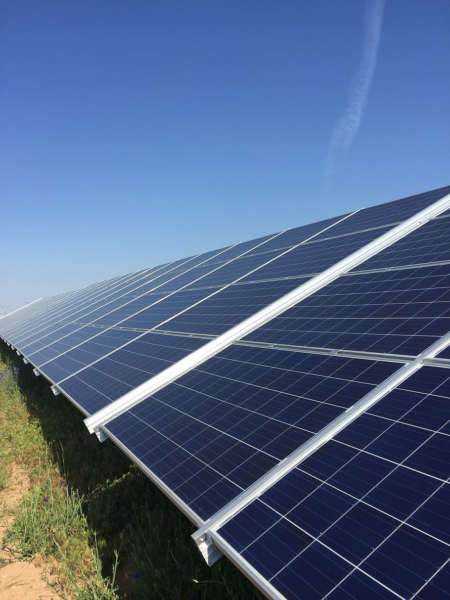
Irrigation and Nutrient Management:
Develop irrigation strategies that meet the water requirements of the crops while minimizing water wastage. Consider the integration of efficient irrigation techniques such as drip irrigation or precision sprinklers. Implement nutrient management practices to ensure proper fertilization and crop health.
Economic Viability and Policy Support
Consider the economic viability and seek policy support for the implementation of agrivoltaic systems:
Cost-Benefit Analysis:
Conduct a comprehensive cost-benefit analysis to assess the economic feasibility of the agrivoltaic system. Consider factors such as installation costs, maintenance expenses, crop yields, and potential revenue from energy generation. Evaluate the payback period and return on investment to determine the project’s financial viability.
Policy and Incentives:
Research local and national policies and incentives that support the integration of agrivoltaics. Look for opportunities such as feed-in tariffs, net metering programs, or grants that can help offset the costs of the system. Engage with relevant governmental agencies, agricultural organizations, and renewable energy associations to understand the available support mechanisms.
Collaboration and Knowledge Sharing:
Seek collaborations with experts, researchers, and agricultural communities experienced in agrivoltaics. Participate in knowledge-sharing platforms, conferences, and workshops to stay updated with the latest advancements in the field. Exchange best practices and lessons learned with other agrivoltaic practitioners to foster innovation and continuous improvement.
Collaboration and Knowledge Sharing:
Seek collaborations with experts, researchers, and agricultural communities experienced in agrivoltaics. Participate in knowledge-sharing platforms, conferences, and workshops to stay updated with the latest advancements in the field.
Case Studies: Successful Agrivoltaic Projects
Case Study 1: Agrisolar Farm in California, USA
Project Name: GreenFields Solar Farm
Location: Central Valley, California
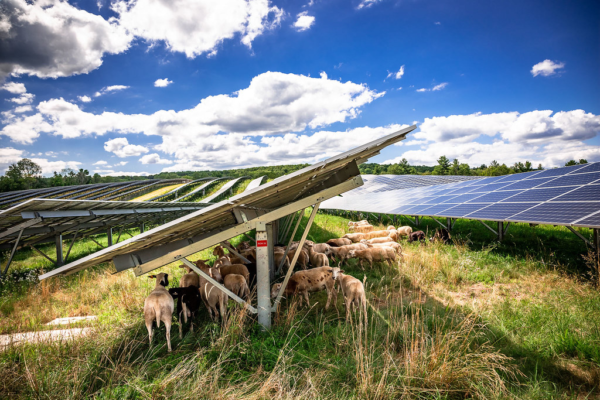
The GreenFields Solar Farm is a pioneering agrivoltaic project located in the fertile farmlands of California’s Central Valley. The project covers a vast area of agricultural land and incorporates solar panels into the existing farming practices. Here are some key highlights:
a) Integration Design: The solar panels are strategically positioned at a height that allows sufficient sunlight to reach the crops underneath. The panels are elevated to create a shaded area for the crops, ensuring optimal growing conditions.
b) Crop Selection: The GreenFields Solar Farm focuses on growing high-value specialty crops, such as tomatoes, peppers, and herbs, underneath the solar panels. These crops benefit from the shade provided by the panels, resulting in improved crop quality and increased yields.
c) Water Management: The project incorporates advanced drip irrigation systems that deliver water directly to the plant roots. This precise irrigation technique minimizes water waste and ensures efficient water utilization, maximizing crop productivity while conserving water resources.
d) Energy Generation: The solar panels installed at the GreenFields Solar Farm generate clean, renewable energy. The surplus electricity is fed into the local power grid, contributing to the region’s energy needs and reducing reliance on fossil fuels.
Case Study 2: Agrivoltaic Vineyard in France
Project Name: Vignes Solaires
Location: Bordeaux, France
Vignes Solaires is an innovative agrivoltaic project situated in the renowned wine-producing region of Bordeaux, France. This project showcases the successful integration of solar energy generation and vineyard cultivation:
a) Panel Orientation: The solar panels are positioned to maximize solar exposure while providing sufficient shading for the grapevines. This arrangement ensures that the vines receive the necessary sunlight for photosynthesis and grape ripening, while also generating renewable energy.
b) Vineyard Management: The vineyard follows organic farming practices, prioritizing soil health and biodiversity. The solar panels create a microclimate that benefits the vines by reducing temperature extremes and protecting against hailstorms, enhancing the overall resilience of the vineyard.
c) Synergy with Wine Production: Vignes Solaires highlights the compatibility of agrivoltaics with the wine industry. The project emphasizes sustainable wine production and promotes the concept of “green wines” produced under the shade of solar panels.
d) Community Engagement: The project actively engages with the local community, offering educational programs and tours to raise awareness about the benefits of agrivoltaics and sustainable agriculture. It serves as a model for promoting renewable energy and environmentally-friendly practices in the wine industry.
5Case Study 3: Integrated Fish Farming and Solar Power in Japan
Project Name: SolarFish
Location: Nagano Prefecture, Japan
SolarFish is an innovative agrivoltaic project in Nagano Prefecture, Japan, that combines fish farming with solar energy generation:
a) Aquaculture Integration: The solar panels are installed above fishponds, providing shade and maintaining optimal water temperatures for fish growth. The panels are designed to allow sunlight to penetrate the water surface, enabling photosynthesis of aquatic plants and ensuring a balanced ecosystem within the fishponds.
b) Sustainable Fish Production: The project focuses on the cultivation of freshwater fish species that thrive in the agrivoltaic system. The combination of solar energy and aquaculture minimizes environmental impacts, reduces reliance on fossil fuel-powered aeration systems, and promotes sustainable fish production.
c) Energy Synergy: SolarFish generates clean electricity through the solar panels, which is utilized to power the fish farm operations. Excess energy is supplied to the local grid, contributing to the region’s renewable energy targets
Challenges and Future Directions
Overcoming Technical and Operational Challenges
Implementing agrivoltaic systems comes with its share of technical and operational challenges that need to be addressed:
System Design and Optimization:
Designing agrivoltaic systems that strike the right balance between solar energy generation and crop productivity requires careful planning. Optimizing panel orientation, height, and spacing, as well as choosing suitable crops, are critical factors for success.
Water Management:
Efficient water management is crucial in agrivoltaics, as shading from solar panels can affect natural rainfall distribution and irrigation needs. Developing effective water conservation strategies, such as advanced irrigation techniques and rainwater harvesting, can help mitigate water-related challenges.
Maintenance and Monitoring:
Regular maintenance and monitoring of both the solar panels and crops are essential to ensure optimal system performance. Monitoring systems for energy production, crop health, and environmental parameters can help identify any issues promptly and enable timely interventions.
Policy and Regulatory Frameworks
To promote the widespread adoption of agrivoltaics, supportive policy and regulatory frameworks are necessary:
Incentives and Subsidies:
Governments can offer financial incentives and subsidies to encourage farmers and landowners to adopt agrivoltaic systems. These can include grants, tax benefits, and feed-in tariffs for the surplus electricity generated.
Streamlined Permitting Processes:
Simplifying the permitting processes for agrivoltaic projects can reduce barriers to entry and expedite the implementation of such systems. Clear guidelines and streamlined procedures can encourage more farmers and investors to embrace agrivoltaics.
Agricultural and Energy Integration Policies:
Developing policies that bridge the gap between the agricultural and energy sectors is crucial. Coordinated efforts between agriculture and energy ministries can lead to cohesive strategies that support the integration of agrivoltaics into national energy and agriculture plans.
Research and Development Needs
Continued research and development efforts are essential to unlock the full potential of agrivoltaics:
a) Crop-Panel Interaction Studies: Further research is needed to better understand the interactions between crops and solar panels, including the effects of shading, light intensity, and microclimatic conditions. This knowledge can guide the selection of suitable crop varieties and inform system design for maximum productivity.
b) Technological Advancements: Investing in research and development for improved solar panel efficiency, durability, and adaptability to agrivoltaic settings can enhance the performance and cost-effectiveness of these systems. Integration of smart technologies, such as sensors and automation, can optimize resource use and system control.
c) Long-Term Monitoring and Evaluation: Long-term monitoring and evaluation of agrivoltaic systems across different climatic regions and agricultural contexts can provide valuable insights into their long-term viability, environmental benefits, and economic feasibility. This data can help refine best practices and guide future implementations.
By addressing technical and operational challenges, establishing supportive policy frameworks, and investing in research and development, agrivoltaics can pave the way for a sustainable and resilient future where renewable energy generation and agriculture coexist harmoniously. The continuous improvement and broader adoption of agrivoltaic systems hold immense potential to contribute to food security, climate change mitigation, and sustainable development.
Conclusion
The comprehensive guide will provide a detailed exploration of agrivoltaics, its benefits, and its potential to address food shortages and climate change. It will delve into the various aspects of implementing an agrivoltaic system, including site selection, solar PV technology, crop selection, and economic viability. Real-world case studies will highlight successful agrivoltaic projects from around the world, demonstrating the feasibility and positive impacts of this approach. The guide will also discuss the challenges and future directions of agrivoltaics, emphasizing the importance of policy support, research, and scaling up to realize its full potential.

